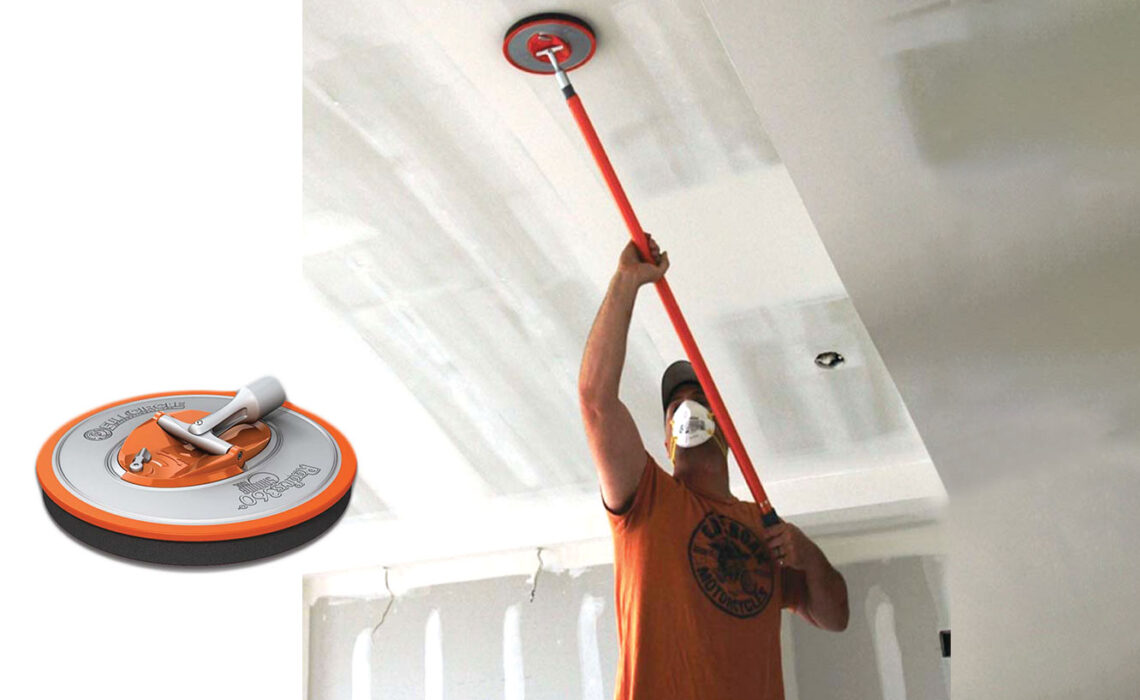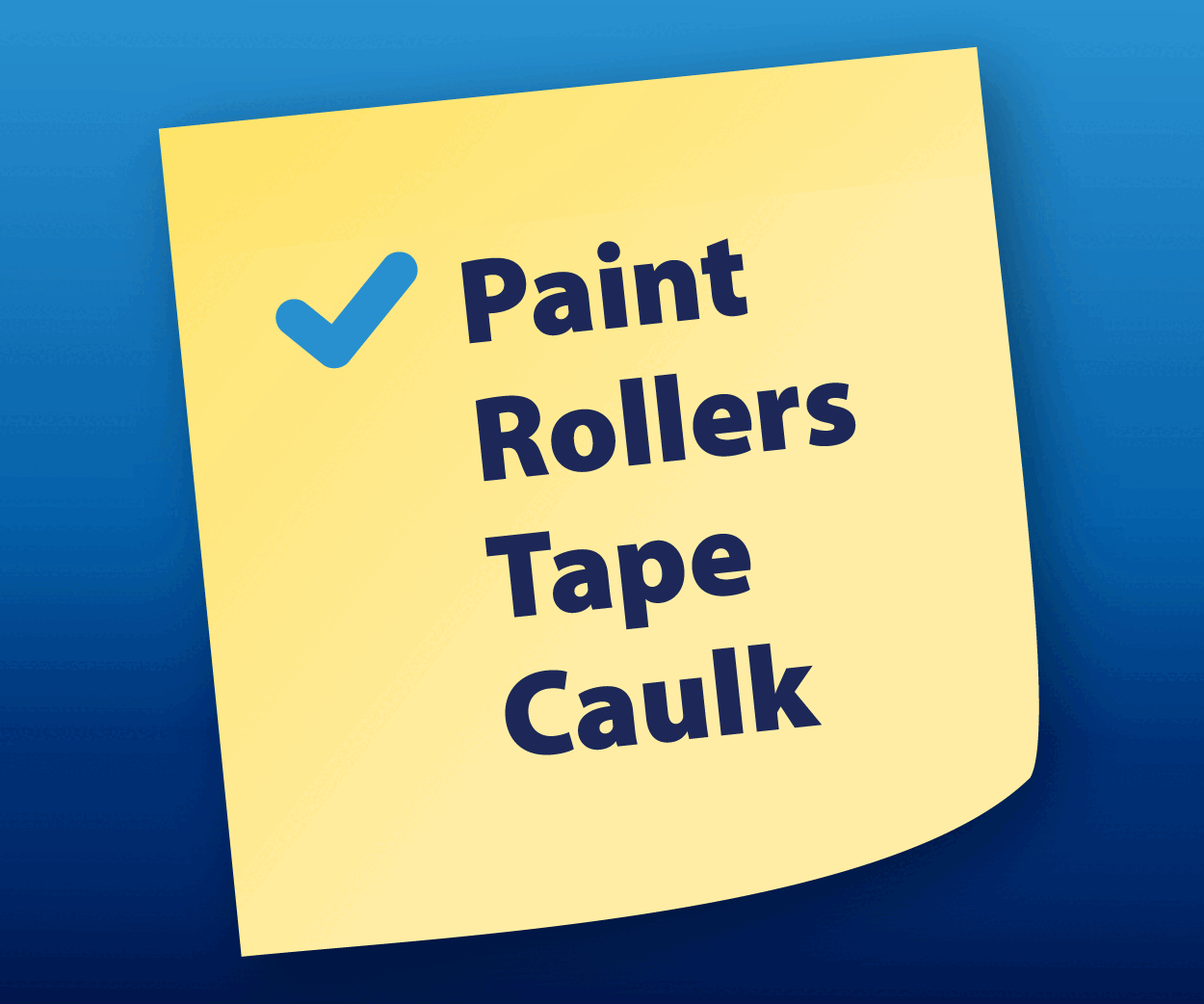
How to get a better finish faster
It was a disaster. The contractor and his crew had been contracted to paint a $4 million house for a new homeowner. But while power sanding to eliminate overspray from a knockdown ceiling, the painting crew hit a snag. The temporary heat wasn’t fully keeping the March moisture and condensation at bay, and the recycled drywall paper on the sheet rock was getting damp. Add to it that the 2000 RPM power sanders had raised the paper on the sheet rock, and the resulting texture of the walls could only be described as “furry.” For efficiency’s sake, the contractor decided to paint the prime coat over it with sprayer. He succeeded at making the texture no longer furry—except now it felt like 80-grit sandpaper. When the homeowner walked in, he could see every butt joint, flat, and nail spot in the wall under natural light. The homeowner was livid.
At this point, the contractor asked Kent Annis, president and owner of Full Circle International, for help. Kent took in the scene, told the crew to pause what they were doing, and asked the painting contractor to follow him into the basement. The contractor brought a roller and a fan, and Kent brought Full Circle’s Radius 360.
Kent’s theory was that the substrate just needed some scuff sanding to get the project back on track. Kent found a wall in the basement that was 25 feet wide and 9 feet tall, and started up his Radius 360.
Created by Full Circle, the Radius 360 is a drywall sanding tool with a revolutionary 9” diameter, die-cast aluminum head that lets painters sand large surface areas efficiently. Though some initially balked at the round design’s inability to reach corners, the circular head all but eliminates flipping and the associated surface scratching and gouging. When using the Radius 360, painters can change directions without having to lift the pad off the wall. As a result, Kent says, the Radius 360 is up to three times faster than using a conventional sand pole.
In this situation, the Radius 360 worked exactly as advertised. In just two and a half minutes, Kent had scuff sanded the entire wall.
“You could see the improvement immediately,” Kent says. “All of a sudden, the conflicting textures blended back together into one again, now that there weren’t all these fibers sticking out. The painter turned the fan on, got behind me, and started rolling the wall. Within 20 minutes, the wall was blemish-free. It was perfect. That’s the power of scuff sanding.”
In this article, Kent and Jeff Annis, Full Circle’s national sales manager, share the impact scuff sanding can have for your business’ reputation, productivity, and bottom line.
No Barriers to Entry
In talking to painting contractors, Kent says he’s found many painters want to avoid sanding when possible.
“Sanding has this stigma among painters, from professional contractors to DIY people,” Kent says. “Obviously, it’s not a fun activity to do. It’s normally dusty. It’s fairly labor-intensive. It’s time-consuming. Plus, with a rectangular sanding tool, the paper wears out at the end, which means you’re going to be sanding a whole lot longer than if you have a tool that resists wear and evenly distributes pressure.
“But many contractors just don’t know that sanding has come a long way in the last decade or so, thanks to innovative dust-free products and random orbital sanders. It’s not as arduous as you might remember—and the results are remarkable.”
To that end, the Radius 360 is designed so that anyone can use it at a high level with minimal training.
“You can hand any apprentice or new guy on the job a Radius 360, and they’re going to have success,” says Kent.
Full Circle hopes that making scuff sanding easy and accessible will encourage contractors not to skip or avoid it.
“It’s about proper surface preparation,” says Jeff. “Sure, you might save a little bit of time by skipping the sanding step. But are you going to get that referral for your next job? We’ve heard it time and time again: Proper sanding makes a difference.”
Options for Every Crew
As Full Circle has grown, they’ve learned there are stark regional differences when it comes to sanding.
“Painters from California have dramatically different finishing practices than painters on the East Coast or in the Midwest,” Kent says. “There’s a huge variation of practices, so we try to offer a wide variety of products to meet every painter’s needs.”
For example, in addition to the Radius 360, Full Circle also offers the Flex EDGE® 2.0, for those who prefer a rectangular sanding tool. Kent says they improved on conventional sanding tools by building it with long-lasting diecast aluminum and implementing a patented pad system which equally distributes pressure as well as a hook-and-loop system which prevents paper from wearing out prematurely.
“When it comes to corners, the Flex EDGE® 2.0 has a rubber bumper that goes around the entire tool and protects your inside corners,” Kent says. “While it’s not necessarily a replacement for a sanding sponge, if the contractor is sanding corners just to texture a wall, the Flex 2.0 works perfectly on its own. For a level 4 or 5 smooth wall, though, we always recommend using an angled sanding block in the detailed areas and inside corners.”
Choosing the right tool also means considering the build quality of a product. Some sanders may initially be cheaper but eventually cost you more due to repairs and replacements. A good product will serve your crew well for years and possibly even decades.
“We still get calls from contractors who still have the original model of the Radius 360,” Kent says. “For 20 years, they’ve just kept replacing the pads and getting the same production out of it. These stories are so great to hear, because we strive to offer quality products.”
The Radius 360, Flex EDGE® 2.0, and all their associated grits of sandpaper and abrasives can be found at Sherwin-Williams stores nationwide. Visit the Sherwin-Williams contractor website for a full list of painting equipment and supplies.
Cutting Down on Cleanup
Because Kent and Jeff used to be contractors before starting Full Circle International, they know painters always have an eye on productivity. How can their crews get more done in less time?
Dust-free (or dustless) sanding products—which can eliminate up to 98% of dust—can help contractors in two major ways.
“First, you cut down tremendously on health risks by eliminating dust,” Jeff says. “Second, there’s hardly any cleanup needed at the end. That can be a huge boon when you’re working in occupied commercial or residential spaces. Some contractors and homeowners report that they don’t even need to poly off after using a dust-free sander. Without that setup and cleanup, you can get in and out of jobs more efficiently than ever.”
The new Radius 360 Air features a patented pivot mechanism—Kent compares it to an elongated ball-and-socket joint—that allows for the same range of motion as the original Radius 360 while eliminating 98% of dust.
Conclusion
After Kent’s scuff sanding with the Radius 360 saved the day, the contractor working on that $4 million home never forgot that lesson. He began scuff sanding every job from then on. Even though it took a little extra time upfront, his business blossomed as a result. Customers were more satisfied with his crew’s work. They received fewer callbacks. Improved word of mouth led to the crew getting hired for more jobs.
“That one change radically improved his business’ reputation and his employees’ job security,” says Jeff.
Proper surface preparation and sanding might take a little extra time, but the business benefits in both productivity and quality more than make up for it. Visit your local Sherwin-Williams store today to find out how the right sanding equipment can improve your business’ bottom line.



